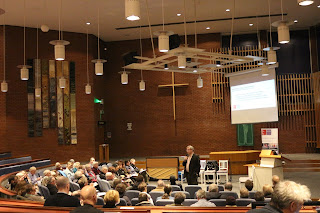Guido Guidi: Per Strada is a selection of 27 prints by the Italian photographer, to coincide with the publication 'Per Strada’. These photographs were made by Guidi from 1980 to 1994, along the Via Emilia – an ancient Italian road connecting Milan with the Adriatic Sea, which passes close to his home in Cesena.
Guidi's métier is close observation of ordinary things - the peripheral, the overlooked and ordinary - and this is what constitutes beauty and life both on and around the via Emilia, as he explained in a recent interview:
"It is a way of bowing down before things. And that is the religious aspect, a respect for things, for the blade of grass and wanting to give back by means of a precise photograph, where the execution of the detail is perfect, absolute, with no grain. The photograph must be absolute, transparent and cannot be corrected and reviewed later. As Didi-Huberman says, for the ancient painters of the 1400s, the act of imitagere or copying nature was in itself an act of devotion. Not necessarily mastery or technical virtuosity but an act of devotion towards things, the “things which are nothing” as Pasolini says.”
For Guidi, as Charlotte Higgins has remarked, ‘his work is not about the decisive moment but the “provisional moment” – the idea that this moment is one of a procession of many.[i]’ Very often, his images ‘show some kind of aperture – a doorway, a window, the arches of a portico, even the edge of the lens itself.’ A photograph is a frame, he says, ‘and if you put a frame in the picture, you are suggesting that this is not the whole world, that there is something outside.’ As with his close observation of the peripheral and provisional, this device too has a religious aspect, as these photos
direct our attention to what is beyond.
By contrast, the images in Civilization are primarily of cityscapes and crowd scenes taken from height and capturing pattern and movement on the macro level. Visually epic, this exhibition includes: Edward Burtynsky’s images conveying both the sublime aesthetic qualities of the industrialised landscape and the unsettling reality of depleting resources on the planet, through a series of geometric compositions photographed from the air; Nadav Kander exploring the vestiges of the Cold War through the radioactive ruins of secret cities on the border between Kazakhstan and Russia; Robert Polidori creating meticulously detailed, large-scale colour photographs that capture the vestiges that evoke the essence of each setting and its particular meaning, as framed by economic, historical, geographic, political and social forces; Simon Roberts’ conflating the traditional genre of landscape with social documentary by positioning the camera at a deliberate distance and elevation from the most obvious scenic viewpoint, focusing instead on the sidelines or peripheral spaces; and Michael Wolf focusing on life in mega cities documenting the architecture and the vernacular culture of metropolises.
Our fast-changing world is seen from above revealing the complexity of our collective human enterprises which are perpetually evolving, morphing, building and demolishing, rethinking, reframing and reshaping of the world and the people within it. Never before in human history have so many people been so interconnected, and so dependent on one another.
As with the Guidi exhibition, Civilisation is presented to celebrate the launch of a new publication - Civilization, The Way We Live Now by William A. Ewing and Holly Roussell, published by Thames & Hudson.
These contrasting exhibitions show the differing values of close-up, which reveals ‘heaven in ordinarie’ and hints at the beyond, and also of the wide angle city or landscape, revealing the patterns forming the material and spiritual cultures that make up ‘civilization’.
----------------------------------------------------------------------------------------------
Small Faces - Afterglow Of Your Love.






























